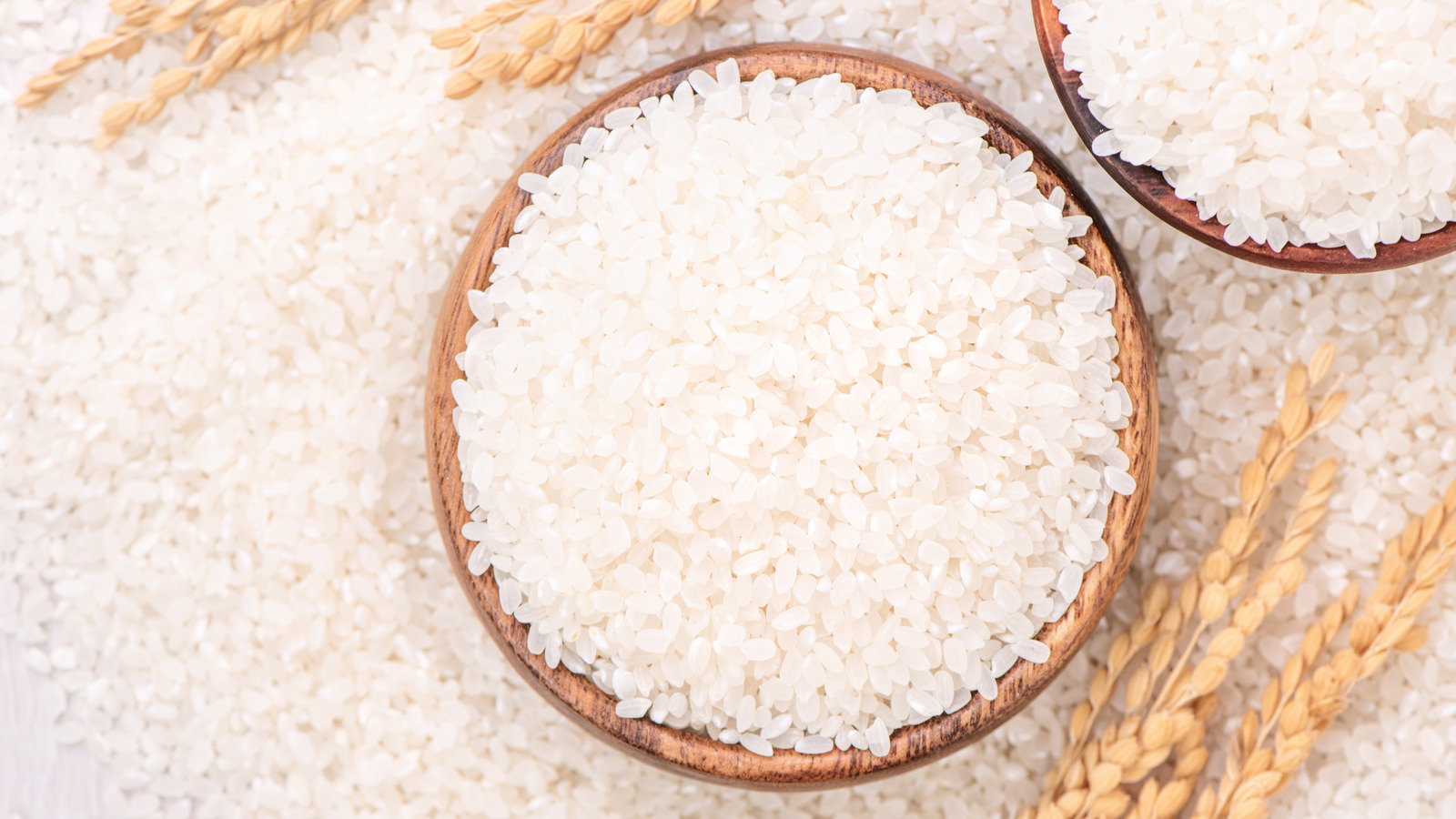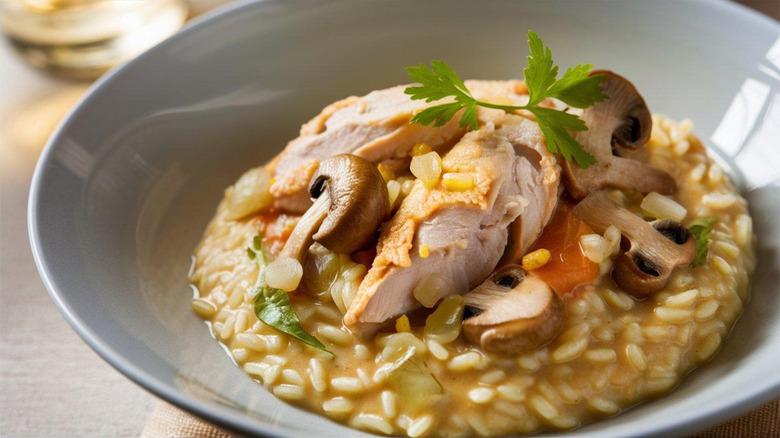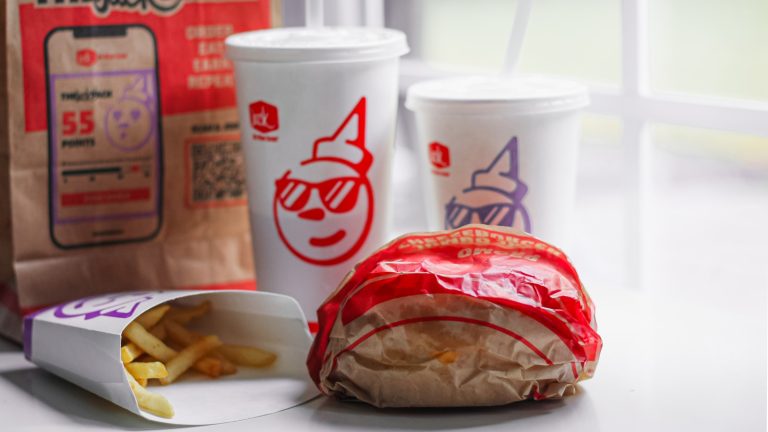Cooking the best risotto comes down to having the proper starch content in your rice. One of the main chemicals in food starch, amylose, is responsible for how firm the rice stays once it’s cooked. Glutinous rice (sometimes called sticky rice) has an extremely low amylose content — one study from Food Hydrocolloids rates it at 4.2% — while arborio sits much higher (18.8% in the same study). Japanese short-grain rice (otherwise known as sushi rice) was found to have a lower amylose content — between about 12% and 15% (via Food Science Commons). Long-grain rices that hold their shape even after they’re cooked have much higher amylose contents.
The other element of starch is amylopectin. Having a greater number of short chains of this molecule equates to stickier rice, and your firmer rices have fewer, longer chains. Sushi rice has an average chain length of about 20 degrees of polymerization (DP) while risotto rices tend to sit lower, at about 18 DP.
In the grand realm of rices, these are minor differences, but they’re hyper-noticeable because of how much risotto quality depends on texture. In Italy, the perfect risotto texture is referred to as “alla’onda,” which translate to “to the wave.” This texture should mimic the gentle flow of ocean swells, and the increased gumminess brought about by sushi rice’s lower amylose content and longer amylopectin chains risks disrupting this delicate balance.
Other rices to avoid in risotto and a few workable swaps
Looking up the specific chemical breakdown of the rice you have on hand whenever you crave risotto probably feels like overkill, and there are some general rules to keep in mind when moving away from the classics. Arborio and the other risotto mainstay, carnaroli rice, are both medium-grain rices, and you should always look for this category for risotto. Japanese short-grain rice tells you right in the name that it’s a poor substitute, and you should also avoid any long-grain rices — basmati and jasmine are two of the most common. Of course, amylose-deficient brown rice is off the table, as well.
For adequate substitutes, the medium-grain bomba rice that’s frequently used for paella works well for risotto in a pinch. Calrose rice has a similar chemical structure to arborio and carnaroli rice and makes great risotto. Or, you could look entirely outside of the rice family. Quinoa risotto has been long been popular in areas where that hearty grain grows more naturally than rice, and it offers an adequate arborio substitute with a little more bite.






